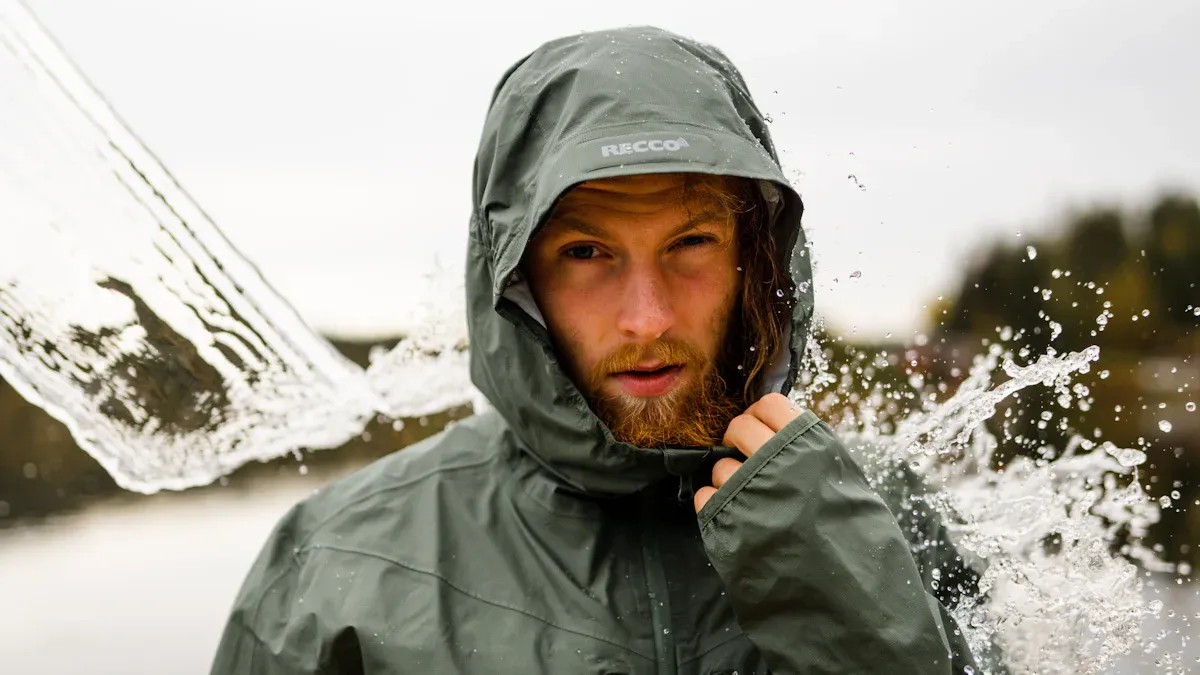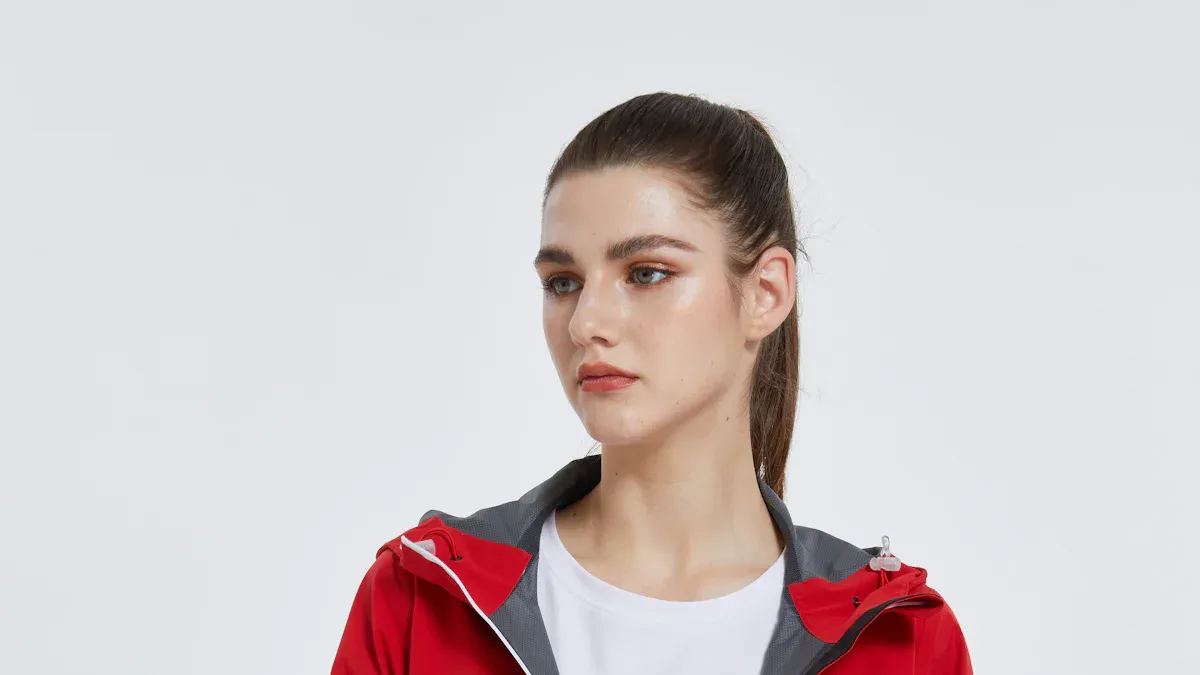
Waterproof Fleece Fabric keeps outdoor enthusiasts dry and comfortable. Recent studies show water-repellent treatments reduce clothing weight gain after rain by over 60%. Test participants also reported feeling less wet and cold, with a softer, lighter, and more comfortable experience during outdoor activities.
- Clothing weight gain after rainfall: 256 g and 137 g for treated vs. 729 g for untreated
- Participants rated treated uniforms as less wet, less cold, and more comfortable
Key Takeaways
- Use wash-in or spray-on waterproofing treatments designed for synthetic fleece to keep your outdoor gear dry and comfortable.
- Prepare your fleece by cleaning it well before applying waterproofing, and always follow product instructions for best results.
- Test water resistance after treatment and maintain your gear by reapplying waterproofing every few months to ensure lasting protection.
Best Ways to Waterproof Fleece Fabric at Home

Wash-In Waterproofing Treatments for Fleece
Wash-in waterproofing treatments offer a convenient way to enhance the water resistance of fleece garments. Many outdoor enthusiasts choose products like Nikwax Polar Proof, which is specifically designed for synthetic fibers. A reviewer from coolofthewild.com tested this treatment by hand washing a fleece jacket and then wearing it during a four-day canoeing trip. The treated fleece showed impressive water repellency, with water beading and rolling off the surface. The wearer stayed dry from splashes and reported that the fleece maintained its breathability and insulation. This practical experience highlights the effectiveness of wash-in treatments for Waterproof Fleece Fabric used in outdoor gear.
Spray-On Waterproofing Products for Fleece
Spray-on waterproofing products provide targeted protection for areas that face the most exposure to moisture. Users can apply these sprays directly to the outer surface of the fleece. This method allows for precise coverage and is ideal for refreshing older gear. Many modern sprays are formulated for synthetic fabrics, ensuring that Waterproof Fleece Fabric retains its softness and flexibility after treatment. Always follow the manufacturer’s instructions for best results.
DIY and Homemade Waterproofing Methods
Some outdoor enthusiasts explore DIY and homemade waterproofing methods for fleece. These approaches often use waxes or silicone-based solutions. While guides explain the practical benefits of these methods, no formal case studies or scientific evaluations exist for their performance on fleece.
- Nikwax’s PolarProof remains a popular choice for flexible water repellency.
- Treatments help maintain breathability and insulation.
- Homemade methods lack quantitative test results.
Tip: Always test a small area before treating the entire garment to ensure compatibility with your fleece.
Step-by-Step Guide to Waterproof Fleece Fabric

Preparing and Cleaning Your Fleece
Proper preparation ensures the best results when waterproofing fleece. Start by inspecting the garment for stains, dirt, or oils. These contaminants can block waterproofing agents from bonding with the fibers. Wash the fleece using a gentle detergent designed for technical fabrics. Avoid fabric softeners, as they can leave residues that interfere with water-repellent treatments. Rinse thoroughly to remove all soap. Allow the fleece to air dry or use a low-heat setting in the dryer. Clean fleece provides an ideal surface for waterproofing products to adhere and perform effectively.
Applying the Waterproofing Treatment
Select a waterproofing product suitable for synthetic materials. Wash-in treatments offer full coverage and work well for new or lightly used garments. Pour the recommended amount into the washing machine, following the manufacturer’s instructions. For targeted protection, use a spray-on product. Hold the spray bottle about six inches from the fabric and apply an even coat, focusing on high-exposure areas like shoulders and sleeves. Gently rub the treatment into the fleece with a clean cloth to ensure even distribution. Laminated fabrics, often used in high-performance outdoor gear, combine a DWR-treated face, a waterproof membrane, and a protective lining. These layers work together to provide durability, breathability, and water resistance. Applying a DWR treatment to the outer layer helps maintain the performance of Waterproof Fleece Fabric.
Drying and Curing the Fabric
After applying the waterproofing treatment, proper drying and curing are essential. Place the fleece in a well-ventilated area or use a tumble dryer on a low setting if the care label allows. Heat can help activate certain DWR treatments, improving their effectiveness. Avoid high temperatures, which may damage synthetic fibers. Ensure the fleece dries completely before use. This step locks in the waterproofing agent and prepares the garment for outdoor conditions.
Testing Water Resistance and Maintenance Tips
Test the effectiveness of the waterproofing by sprinkling water on the fleece. Water should bead and roll off the surface. If the fabric absorbs moisture, consider reapplying the treatment. Maintenance plays a crucial role in preserving water resistance. Wash Waterproof Fleece Fabric only when necessary, using mild detergents. Reapply waterproofing products after several washes or when water no longer beads on the surface. Stephen Akrill’s “Tandoori-test” demonstrates that even advanced waterproof-breathable fabrics allow some water penetration over time. This finding highlights the importance of realistic expectations and regular maintenance. No fabric remains completely waterproof forever, but proper care extends the life and performance of outdoor gear.
Tip: Keep a maintenance log for your gear. Record the date and type of treatment applied. This habit helps track performance and ensures timely reapplication.
Waterproofing fleece fabric at home offers reliable protection for outdoor gear. Regular maintenance ensures Waterproof Fleece Fabric performs well in wet conditions. Outdoor enthusiasts experience greater comfort and warmth.
Try these methods to keep gear dry and ready for any adventure.
FAQ
How often should someone reapply waterproofing to fleece fabric?
Most outdoor experts recommend reapplying waterproofing every 3–6 months, depending on usage and washing frequency. Regular maintenance ensures optimal water resistance.
Can waterproofing treatments affect fleece breathability?
Waterproofing treatments designed for fleece maintain breathability. Quality products, such as Nikwax Polar Proof, preserve airflow while adding water repellency.
Is it safe to use a dryer after applying waterproofing treatment?
- Always check the care label first.
- Low heat helps activate some treatments.
- High temperatures may damage synthetic fibers.
Post time: Jun-14-2025